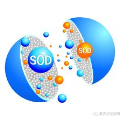Salient object detection (SOD) is a task that involves identifying and segmenting the most visually prominent object in an image. Existing solutions can accomplish this use a multi-scale feature fusion mechanism to detect the global context of an image. However, as there is no consideration of the structures in the image nor the relations between distant pixels, conventional methods cannot deal with complex scenes effectively. In this paper, we propose an adaptive graph convolution module (AGCM) to overcome these limitations. Prototype features are initially extracted from the input image using a learnable region generation layer that spatially groups features in the image. The prototype features are then refined by propagating information between them based on a graph architecture, where each feature is regarded as a node. Experimental results show that the proposed AGCM dramatically improves the SOD performance both quantitatively and quantitatively.
翻译:显著物体检测 (SOD) 是识别和分割图像中最具视觉突出性物体的任务。现有的解决方案可以使用多尺度特征融合机制来检测图像的全局内容。然而,由于没有考虑图像中的结构或远距离像素之间的关系,传统方法不能有效地处理复杂场景。本文提出了一种自适应图卷积模块 (AGCM) 来克服这些限制。首先,使用可学习的区域生成层从输入图像中提取原型特征,该层将特征在空间上进行分组。然后,基于图形结构,在原型特征之间传播信息来对原型特征进行细化,其中每个特征被视为一个节点。实验结果表明,所提出的自适应图卷积模块在定量和定性上都显著改善了 SOD 性能。




